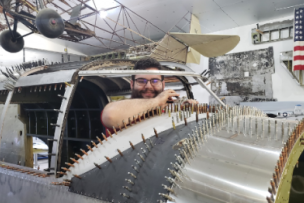PROTO® IS BUILT BEYOND STRONG. Proto® tools are precision engineered to give you more than just power. Proto® tools work like you do. Not just hard and strong, but smarter and safer, too. Proto® tools are heat forged and nickel-plated, making them tough enough to withstand even the most demanding work environment, from the blast of zero-degree temperatures to the rapid-fire pace of the factory floor. WHAT WE REALLY OFFER OUR CUSTOMERS IS PEACE OF MIND. Our customers work tough industrial jobs in extreme environments and the impact of injury or work stoppage can be catastrophic and costly. When they buy from PROTO® they aren’t just buying tools. What they are really buying is confidence that our tools will keep them working longer and safer. WE ARE SAFETY OBSESSED. It’s embedded in our DNA and is embodied in our tools and our tool training. We are exhaustive in our efforts to make the world’s safest tools and educate workers to work safely.
INTRODUCTION:
THE NEED TO DO MORE FOR LESS
Aircraft demand is on the rise while customers expect lower costs and increased efficiency. Yet a 9% gap1 between available technicians and higher technician demand looms, leaving maintenance shops under considerable pressure to compete.
Aircraft maintenance operations require innovative solutions to decrease overall maintenance costs in labor, turn time, and hard materials without sacrificing safety.
A new range of torque wrenches and in-house torque testing and calibration solutions are now available to help meet these needs. Designed for efficiency, solutions by PROTO® help increase safety while reducing overhead costs.
IN THIS PAPER PROTO DISCUSSES:
• How electronic torque wrenches increase safety by reducing margin of error.
• The cost and time-saving benefits of in-house check and calibration technology.
• How utilizing these solutions will increase efficiency while reducing overhead and costly mistakes.
BACKGROUND
As aircraft demand continues to rise with active global commercial fleet projected to grow 4.2% annually over the next 5 years2, customers—from airlines to government defense procurement officials—continue to expect more value for their money. Economic and competition pressures remain high, causing customers to demand increased reliability, reduced maintenance costs, shorter maintenance times, and better, more competitive mechanics tool offerings. In fact, the global aerospace and defense sector is expected to continue to experience pricing pressure, resulting in the need for more efficiencies and reduced costs on all levels.
Additionally, a shortage of current and future maintenance technicians puts further stress on the maintenance industry. Over the next 10 years, a projected increased demand in maintenance technicians, paired with a current shortage in qualified applicants, will lead to a 9% gap by 20272.




.jpg?itok=n8RJiCXK)
.jpg?itok=7w2MxRkK)



Talk to Us!
Leave a reply
Your email address will not be published. Required fields are marked *